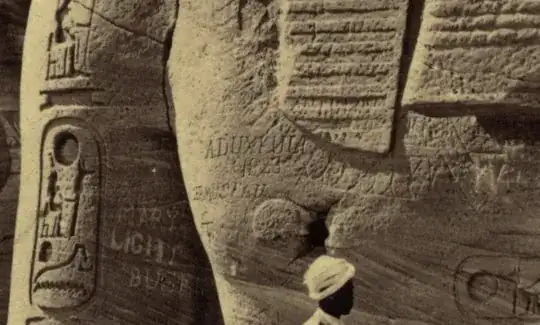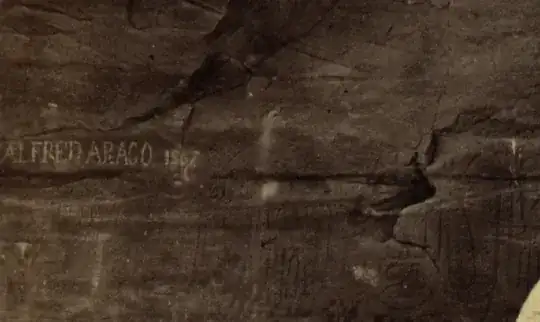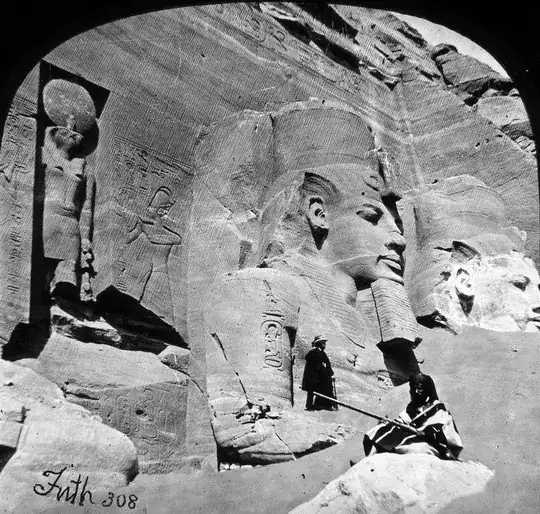Whilst browsing on the notoriously pseudo historical subreddit called r/CulturalLayer I came across this post, that leads to another post on a popular Russian blogging website called livejournal.
Scrolling through the post, it seems that the author thinks that famous ancient Egyptian monuments were only built back in the 19th century by a group of malicious forgers (the theory probably goes in the tradition of the Tartaria conspiracy theory).
Here are some machine-translated excerpts from the blog post:
Below [the inscription "ADUXKULL 1823"] is the name of the German writer, landscape architect (!) (and also, let's add, a representative of the history creators workshop) MUSKAU, who was in Nubia in 1837-38

There are other inscriptions. The Spaniard or American ALFRED ARAGO was noted on the "base of the rock", but frozen, in 1807.

On the shin of Amon (far left in the trinity of gods and equated with the gods of Ramses), CC BLACK is clearly read - there is no need to guess the nation, the surname of the Italian ending in MOZI is higher, and the year is 1820.

The author then proceeds to explain why he has a problem with the existence of these graffiti-apparently Abu Simbel was only starting to be dug up in the 1850s yet most of these inscriptions are from before that time period and they were also on spots that would be deep under sand.
Why couldn't scientists, travelers, tourists who didn't exist at that time do it? Everything is simple. The colossi were almost completely under the sand. In the 50s they were dug up, starting from the left one - Amon. The right side of the Ramses was filled up until the last moment of clearing.
As proof he includes some pictures of the temple being almost completely under the sand, for example:

The author rejects the possibility of a sandstorm (albeit not conclusively at all)
Could sandstorms have brought the colossi after the 1830s. Of course not. There is almost no sand in the upper reaches of the Nile; it must be purposefully brought in for these colossi and for bedding for today's tourists.
What are the rational explanations for these graffiti?